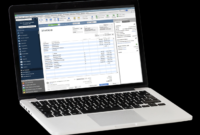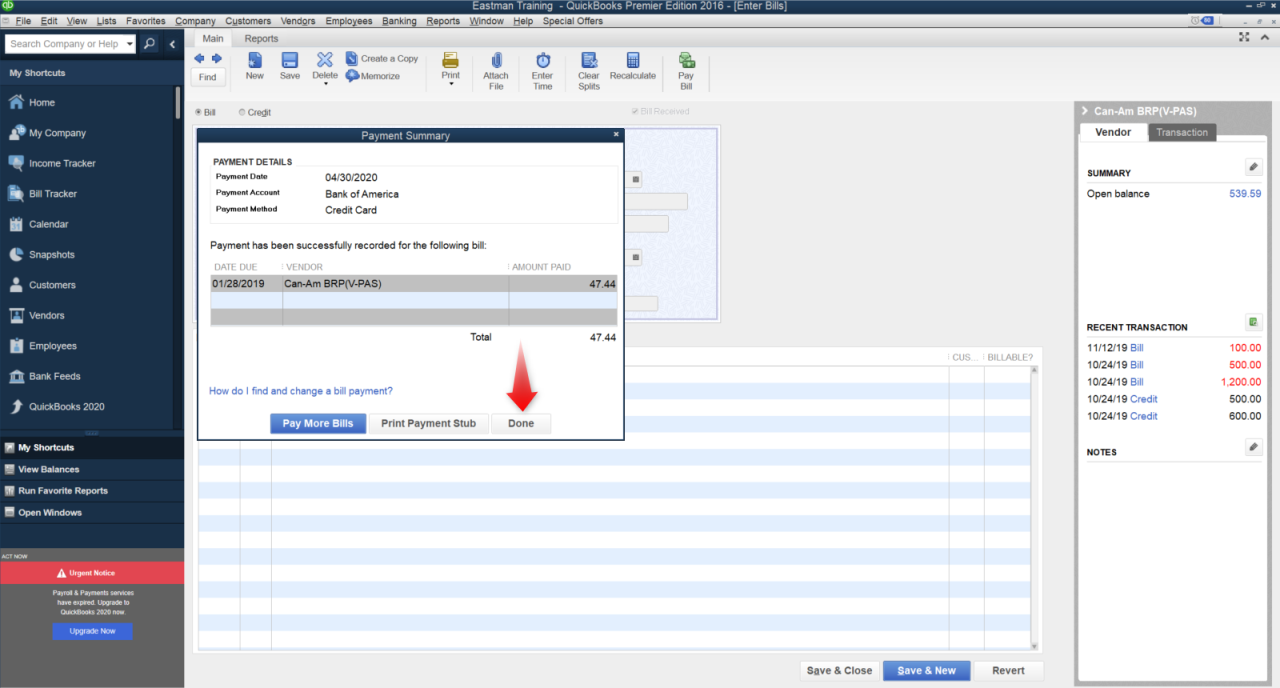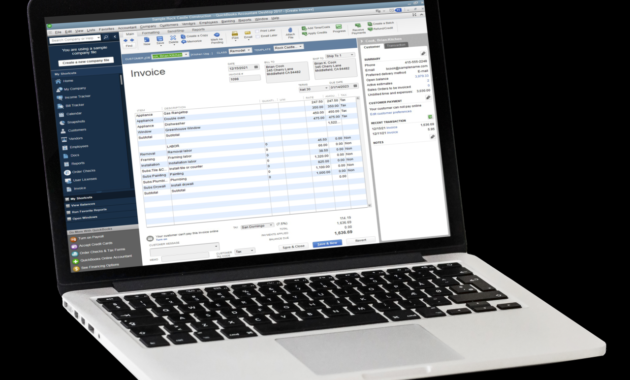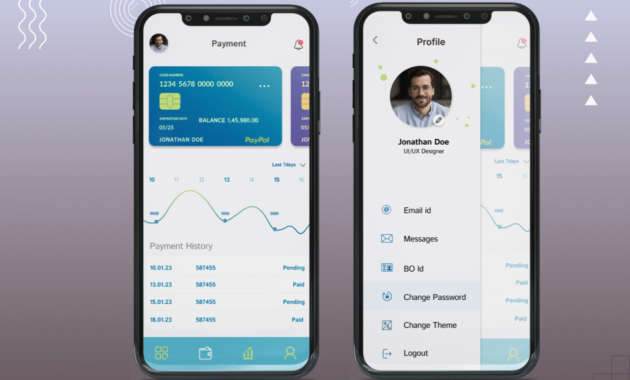Credit card payment processing machine takes center stage as a crucial asset for businesses in today’s fast-paced economy. These machines not only streamline transactions but also enhance customer experience by offering quick and secure payment options. With a variety of machines available, each tailored to different business needs, understanding their functionality and benefits is essential for any merchant aiming to thrive in a competitive marketplace.
From retail shops to restaurants, these devices come in multiple forms, each designed to facilitate secure credit card transactions efficiently. By diving into the components and workings of credit card payment processing machines, we’ll uncover how they operate, the security measures they employ, and the advantages they bring to both merchants and customers alike.
Overview of Credit Card Payment Processing Machines

Credit card payment processing machines play a crucial role in facilitating electronic transactions in various business environments. These devices enable merchants to accept credit and debit card payments quickly and securely, streamlining the checkout process and enhancing customer satisfaction. With the rise of cashless transactions, understanding the functionality and variety of these machines has become increasingly important for businesses of all sizes.The primary function of a credit card payment processing machine is to authenticate and process card transactions, ensuring that funds are transferred securely from the customer to the merchant.
This involves reading the card’s magnetic stripe or chip, connecting to the payment processor via a secure network, and verifying the transaction details. There are several types of payment processing machines available in the market, each designed to cater to specific business needs and environments.
Types of Credit Card Payment Processing Machines
Different types of credit card payment processing machines are tailored to various operational needs. The following are some of the most common machines used across industries:
- Traditional Point-of-Sale (POS) Terminals: These countertop devices are typically used in retail stores and restaurants. They often come with a keypad for entering transaction amounts and a display screen for customer interaction.
- Mobile Payment Terminals: Compact and portable, these devices connect to smartphones or tablets via Bluetooth or Wi-Fi. They are ideal for businesses that require mobility, such as food trucks or market vendors.
- Integrated POS Systems: These comprehensive systems combine hardware and software, allowing businesses to manage inventory, sales, and customer relationships. They are prevalent in retail and hospitality settings.
- Virtual Terminals: These web-based solutions allow merchants to process transactions online. They are particularly useful for e-commerce businesses, enabling credit card payments without the need for physical hardware.
Industries that commonly utilize credit card payment processing machines include retail, hospitality, healthcare, and e-commerce. In retail, POS terminals streamline customer checkouts, while in hospitality, mobile payment solutions enhance service for on-the-go transactions. The healthcare industry leverages these machines for patient billing, ensuring secure and efficient payment handling. Additionally, e-commerce businesses benefit from virtual terminals, making online shopping convenient for consumers.
Credit card payment processing machines are essential in modern commerce, facilitating secure transactions and enhancing customer experiences.
Components of a Credit Card Payment Processing Machine
Credit card payment processing machines play a vital role in the transaction ecosystem, enabling merchants to accept payments swiftly and securely. Understanding the key components of these machines can provide insights into how they function and the importance of each element in the payment process.These machines consist of several interrelated components that work together to facilitate credit card transactions. Each part contributes uniquely to the efficiency and security of processing payments, ensuring a smooth transaction experience for both the merchant and the customer.
Key Components
The following table Artikels the essential components of a credit card payment processing machine, describing their functions and importance in the payment processing workflow.
| Component | Description | Function |
|---|---|---|
| Card Reader | The hardware that reads the information stored on the magnetic stripe or chip of a credit card. | Converts card data into a digital format for processing. |
| Keypad | A numeric input device allowing users to manually enter their PIN or transaction amount. | Facilitates user interaction and secure PIN entry. |
| Display Screen | A visual interface that provides prompts and transaction details to the user. | Enhances user experience by displaying necessary information during transactions. |
| Printer | A device that generates paper receipts for transactions. | Provides transaction records for users and merchants. |
| Communication Module | The component that connects the machine to the payment processor’s network. | Ensures secure data transmission and connection to payment gateways. |
| Power Supply | The source of energy that powers the machine. | Ensures the machine operates efficiently during transactions. |
Each of these components plays an integral role in ensuring that transactions are processed securely and quickly. For instance, the card reader is crucial for capturing card information, while the communication module guarantees that this information is transmitted securely to the payment processor. Furthermore, the display screen and keypad enhance user interaction, making the payment process seamless.
“It is essential that every component functions correctly, as they collectively ensure the reliability and security of credit card transactions.”
The Payment Processing Workflow: Credit Card Payment Processing Machine

The payment processing workflow is a crucial series of steps that facilitate the secure and efficient transaction of funds during a credit card payment. Understanding this process is essential for businesses and consumers alike, as it ensures that transactions are completed smoothly and securely. Each step in this workflow is intricately connected and plays a vital role in the overall transaction experience.The payment processing workflow consists of several key stages that involve various stakeholders, from the cardholder to the merchant, and ultimately the banks involved.
Knowing these steps helps in understanding how data flows during a transaction, including the critical phases of authorization and settlement, which are essential for ensuring that the transaction is valid and funds are transferred appropriately.
Steps Involved in Processing a Credit Card Payment
To clarify how a credit card payment is processed, let’s break down the workflow into distinct, sequential steps that illustrate the flow of data. This structured approach helps in visualizing each stage of the transaction.
1. Transaction Initiation
The process begins when a customer makes a purchase at a merchant’s point of sale (POS) system. The customer swipes, dips, or taps their credit card, initiating the payment.
2. Data Transmission
The POS system captures the card details and securely sends transaction data to the payment processor, including the card number, expiration date, and the transaction amount.
3. Authorization Request
The payment processor forwards the authorization request to the customer’s issuing bank to verify the cardholder’s identity and check for sufficient funds.
4. Authorization Response
The issuing bank checks the transaction against the customer’s account. If approved, it sends an authorization code back to the payment processor; if declined, it sends a notification to the merchant.
5. Transaction Completion
Upon receiving an authorization code, the merchant completes the transaction, providing the customer with a receipt and confirming the purchase.
6. Settlement Process
At the end of the business day, the merchant’s transactions are batched together and sent to the payment processor for settlement. The payment processor then communicates with both the acquiring bank and the issuing bank to transfer funds.
7. Fund Transfer
The issuing bank releases funds to the acquiring bank, which then deposits the amount into the merchant’s account, completing the transaction cycle.
Flow of Data During a Transaction
Illustrating the flow of data during a transaction helps to visualize how information travels through the payment processing workflow. The following steps represent the journey of data:
Cardholder’s Device to Merchant’s POS
This initial step involves data capture through card swiping or insertion.
Merchant’s POS to Payment Processor
Data is securely transmitted via encrypted channels.
Payment Processor to Issuing Bank
The processor forwards the transaction data for authorization checks.
Issuing Bank to Payment Processor
The bank responds with an authorization or decline status.
Payment Processor to Merchant’s POS
The merchant receives the status and completes the transaction.
Settlement Data
At day’s end, batch transaction data is sent for fund transfers between banks.
“Understanding the payment processing workflow is essential for ensuring secure and efficient transactions.”
Flowchart of the Payment Processing Workflow
To further clarify the payment processing workflow, a flowchart can be a valuable tool. The flowchart illustrates each step of the transaction process, showing how data flows through various entities involved. Flowchart Description:
Start
Customer initiates payment at POS.
Data Capture
Card details are captured.
Data Transmission
Information sent to payment processor.
Authorization Request
Payment processor contacts the issuing bank.
Authorization Response
Issuing bank responds with approval/decline.
Transaction Completion
Merchant completes the sale.
Settlement Process
Transactions are batched and processed at day’s end.
Funds Transfer
Money is transferred from the issuing bank to the merchant’s account.
End
Transaction is complete.The flowchart provides a visual representation of each step, aiding in comprehending the complexities of credit card payment processing. It emphasizes the interconnected nature of the entities involved and the critical importance of secure data handling throughout the process.
Security Features of Payment Processing Machines

Ensuring the security of credit card transactions is paramount in today’s digital economy. As the prevalence of online and in-person transactions increases, so does the risk of fraud and data breaches. Payment processing machines play a crucial role in safeguarding sensitive customer information and ensuring that transactions are conducted safely. Businesses must prioritize robust security measures to protect both themselves and their customers from potential threats.Security features in payment processing machines are designed to combat fraud and maintain the integrity of financial transactions.
These machines incorporate various technologies and protocols that help secure cardholder data throughout the transaction process. Below are some key security features typically found in these devices.
Key Security Features in Payment Processing Machines
The following features are essential for ensuring secure credit card transactions:
- Encryption: Encryption converts sensitive data into a coded format that can only be decrypted by authorized parties. This ensures that even if data is intercepted, it remains unreadable to unauthorized users.
- Tokenization: Tokenization replaces sensitive card information with a unique identifier or token that has no exploitable value. This means that the real card numbers are never stored or transmitted during the transaction process.
- EMV Chip Technology: EMV (Europay, MasterCard, and Visa) chips add an extra layer of security through dynamic authentication, making it significantly harder for counterfeit transactions to occur.
- PCI Compliance: Adhering to Payment Card Industry Data Security Standards (PCI DSS) ensures that payment processing machines meet stringent security requirements to protect cardholder information.
- Fraud Detection Systems: Many payment machines come equipped with advanced fraud detection algorithms that analyze transaction patterns in real-time to flag suspicious behaviors.
An example of how encryption is utilized in payment processing can be seen in the use of secure socket layer (SSL) technology. When a customer swipes their card, the payment information is encrypted and transmitted securely to the payment processor. This means that even if an attacker manages to intercept the data, they would only receive a series of indecipherable characters, effectively protecting the customer’s sensitive information.
Benefits of Using a Credit Card Payment Processing Machine
The implementation of credit card payment processing machines offers numerous advantages for businesses, enhancing both operational efficiency and customer satisfaction. These machines streamline transactions, providing a seamless experience for consumers while ensuring that businesses can manage sales effectively. As the market continues to evolve, the benefits of adopting these machines become increasingly apparent.Credit card payment processing machines outperform other payment methods such as cash or checks in several key areas.
They not only reduce the time taken to complete a transaction but also enhance security and accuracy, minimizing the risk of human error. With the ability to accept various payment forms, these machines cater to a diverse customer base, ultimately driving sales and profitability.
Key Benefits for Merchants and Customers
Understanding the advantages of credit card payment processing machines is crucial for both merchants and customers. Here are some of the notable benefits:
- Faster Transactions: Payment processing machines significantly reduce transaction times compared to cash handling or check processing, resulting in shorter lines and improved customer experience.
- Increased Sales Opportunities: Many consumers prefer using credit cards, and accepting these payments can lead to higher sales, especially in markets with a significant number of cardholders.
- Enhanced Security: Modern machines are equipped with advanced security features that protect sensitive data, such as encryption and tokenization, reducing fraud risk for both merchants and customers.
- Accurate Record Keeping: Electronic payment systems automatically record transactions, simplifying bookkeeping and financial reporting for businesses.
- Customer Convenience: Credit card payment processing allows customers to make purchases on-the-go, accommodating a digital lifestyle and encouraging impulse buying.
- Accepting Multiple Payment Types: Many machines support not only credit and debit cards but also mobile payments, making it easy for customers to pay using their preferred method.
- Improved Cash Flow: With quicker processing times and reduced manual handling of cash, businesses often experience improved cash flow and can manage their finances more effectively.
“Investing in a credit card payment processing machine is not just a decision for convenience; it’s a strategic move that can elevate a business’s standing in a competitive market.”
Choosing the Right Payment Processing Machine
Selecting a suitable payment processing machine is crucial for any business that wants to facilitate smooth and efficient transactions. The right machine can enhance the customer experience, streamline operations, and ultimately boost sales. Given the variety of options available, understanding the key criteria for selection becomes essential.When evaluating payment processing machines, several factors come into play. These include cost, features, transaction fees, compatibility with existing systems, and customer support.
Each of these components can have a significant impact on your business operations and bottom line.
Criteria for Selecting a Payment Processing Machine
It’s important to consider various criteria when selecting a payment processing machine. The following factors can help guide your decision:
- Cost: Evaluate the initial purchase price and ongoing costs such as transaction fees and monthly charges. Some machines may have low upfront costs but high transaction fees, so calculating the total cost of ownership is vital.
- Features: Identify the necessary features for your business. This may include contactless payment options, mobile payment support, or inventory management capabilities. Ensure the machine can meet current and future needs.
- Customer Support: Opt for a provider that offers reliable customer support. Consider availability of technical support, response times, and the resources available for troubleshooting and guidance.
- Integration: Ensure that the processing machine can integrate seamlessly with your existing systems such as point-of-sale (POS) software, accounting systems, and other business tools.
- Security Features: Look for machines that comply with PCI DSS standards and offer advanced security features to protect customer data and reduce fraud risks.
Comparison of Popular Payment Processing Machines
When comparing payment processing machines, it is helpful to have a clear overview of popular options in the market. The following table Artikels key features, costs, and target businesses for some well-known machines:
| Machine | Cost | Key Features | Best For |
|---|---|---|---|
| Square Reader | Low upfront cost; transaction fees apply | Mobile payments, no monthly fees, inventory management | Small businesses and freelancers |
| Verifone VX 675 | Medium initial cost, transaction fees vary | Touchscreen, fast processing, reports | Retail and restaurant establishments |
| PayPal Here | Low upfront cost; transaction fees apply | Mobile payments, invoicing, reporting | Online and brick-and-mortar businesses |
| Clover Station | Higher initial investment; monthly fees included | Customizable POS system, extensive app marketplace | Medium to large businesses needing robust features |
| Ingenico iWL250 | Medium cost; monthly service fees | Portable, long battery life, multiple payment methods | Businesses needing mobility and flexibility |
Common Challenges and Solutions
Businesses often encounter various challenges when utilizing credit card payment processing machines. These machines, despite their advantages, can present issues that could disrupt transactions and affect customer satisfaction. Understanding these challenges and implementing effective solutions is crucial for maintaining smooth operations and ensuring a positive experience for both businesses and their customers.
Analysing the most common issues helps in identifying not only the problems but also the solutions that can mitigate them effectively.
Technical Malfunctions
Technical issues such as hardware failures or software glitches can lead to transaction failures, which may frustrate customers. Regular maintenance and software updates are essential to minimize these occurrences. Additionally, staff training on troubleshooting basic issues can significantly reduce downtime. Here are some best practices to address technical malfunctions:
- Perform routine checks on hardware components.
- Ensure software is updated regularly to combat bugs.
- Train employees on basic troubleshooting techniques.
Regular maintenance can prevent 80% of technical issues.
Security Vulnerabilities, Credit card payment processing machine
Security breaches are a significant concern for businesses using payment processing machines. Issues such as data theft can lead to severe financial repercussions and loss of customer trust. To mitigate these risks, businesses should adopt robust security measures. Implementing encryption, secure networks, and compliance with PCI DSS (Payment Card Industry Data Security Standard) are crucial steps. Effective security practices include:
- Utilizing end-to-end encryption for transactions.
- Regularly updating security protocols and software.
- Conducting security audits to identify vulnerabilities.
“A secure payment environment is essential for protecting customer data.”
Integration Issues
Integrating payment processing machines with existing business systems can pose challenges. Compatibility issues may arise, leading to inefficient workflows. To tackle these integration challenges, businesses should opt for machines that offer seamless integration with POS systems and other software. Considerations for successful integration include:
- Choosing machines that are compatible with existing systems.
- Working with vendors who provide reliable support during integration.
- Testing the integration thoroughly before full-scale implementation.
Effective integration ensures smoother operations and improved customer service.
Customer Acceptance
Some customers may hesitate to use credit cards due to concerns about safety or unfamiliarity with technology. Educating customers about the benefits and security of credit card transactions can help alleviate these fears. Strategies to promote acceptance include:
- Providing informational materials on payment safety.
- Encouraging feedback to address customer concerns.
- Offering incentives for using credit card payments.
“Customer education is key to increasing credit card usage.”
Future Trends in Payment Processing Technology
As technology continues to evolve, the payment processing landscape is set for significant transformation in the coming years. Innovations in various fields, such as artificial intelligence, blockchain, and mobile technology, are poised to redefine how transactions take place, enhancing both efficiency and security. The future of credit card payment processing machines will likely reflect these advancements, making transactions quicker and more user-friendly.Emerging technologies are expected to play a crucial role in shaping the future of credit card processing.
For instance, the integration of artificial intelligence (AI) in payment systems can lead to smarter fraud detection systems that learn from transaction patterns and adapt in real-time to prevent unauthorized access. Furthermore, the adoption of blockchain technology may streamline payment processes by providing a decentralized and secure ledger for transactions, which can significantly reduce processing time and costs.
Innovative Features in Future Payment Processing Machines
Several innovative features are anticipated to become standard in payment processing machines over the next decade. These advancements not only aim to enhance the user experience but also prioritize security and efficiency. Below are some of the notable trends expected to emerge:
- Contactless Payments: With the rise of NFC technology, contactless payments will see wider adoption, allowing customers to pay simply by tapping their cards or devices, making transactions faster and more convenient.
- Biometric Authentication: Future machines may incorporate biometric verification methods, such as fingerprint or facial recognition, to ensure secure transactions without the need for passwords or PINs.
- AI-Powered Analytics: Payment processing machines will likely leverage AI to provide businesses with insights into customer behavior, optimizing inventory and marketing strategies based on purchasing patterns.
- Integration with IoT Devices: As more devices become interconnected, payment systems will likely integrate with IoT, enabling seamless transactions from smart appliances and wearables.
- Decentralized Payment Solutions: Blockchain technology may lead to decentralized payment systems, allowing for peer-to-peer transactions without the need for traditional banks or intermediaries.
- Enhanced Security Protocols: Future payment machines will adopt advanced encryption methods and tokenization processes to further protect sensitive consumer data against breaches.
“The integration of AI and blockchain will not only enhance security but also revolutionize the speed and efficiency of transactions.”
The evolution of payment processing technology is an exciting frontier that promises to enhance user experience and security while reducing costs. As these technologies develop, businesses and consumers alike will benefit from a more streamlined and secure payment ecosystem.
FAQ Resource
What types of credit card payment processing machines are available?
There are several types, including countertop terminals, mobile card readers, and integrated POS systems, each serving different business needs.
How do credit card payment processing machines ensure transaction security?
They utilize encryption and tokenization to protect sensitive data during transactions, minimizing the risk of fraud.
Can I use a credit card payment processing machine for online payments?
Yes, many machines can integrate with e-commerce platforms to facilitate online transactions.
Are there fees associated with using credit card payment processing machines?
Yes, typically there are transaction fees, monthly fees, and sometimes equipment rental fees, depending on the service provider.
What factors should I consider when choosing a credit card payment processing machine?
Consider transaction volume, cost, features, integration capabilities, and customer support when selecting a machine.















